|
Printables |
PowerPoints |
Online exercises |
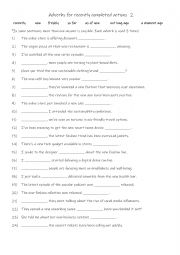
|
7 adverbs for recently completed actions 2
First, students need to familiarise themselves with the 7 adverbs. Then they read the sentences to work out which one is needed to complete the gap-fill. Each adverb is used 3 times! Answers on page 2
Level: elementary
Age: 9-100
Type:
Downloads: 104
|
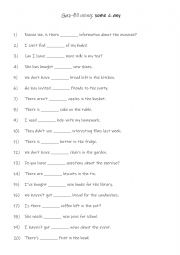
|
A1+-A2 Gap-fill using some & any (1)
Students read the sentences, then complete the gap-fill with some / any. Answers on page 2.
Level: elementary
Age: 8-100
Type: worksheet
Downloads: 107
|
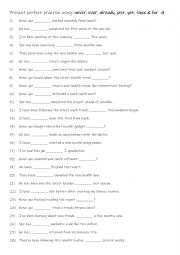
|
A2+-B1 Present perfect practise using never, ever, already, just, yet, since & for 4
First, students need to familiarise themselves with adverbs and their use. Then they read the sentences to see which one is needed to complete the gap-fill. Answers on page 2.
Level: elementary
Age: 9-100
Type:
Downloads: 104
|
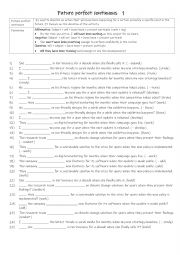
|
B1+-B2 Future perfect continuous 6
Students should learn the future perfect continuous because it enables them to express actions that will have been ongoing for a specific duration before a certain point in the future. This tense is particularly useful for discussing long-term plans or commitments (e.g., By next year, she will have been working here for a decade) and for highlighti...
Level: intermediate
Age: 11-100
Type:
Downloads: 126
|
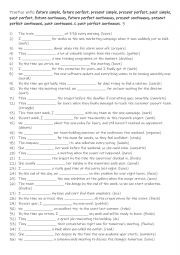
|
Practise with: future simple, future perfect, present simple, present perfect, past simple, past perfect, future continuous, future perfect continuous, present continuous, present perfect continuous, past continuous & past perfect continuous. 3
First, students need to familiarise themselves with the 12 tenses and their usage. Then they read the sentences to see which tense is needed to complete the sentence using the given infinitive in (). Answers on page 2.
Level: intermediate
Age: 10-100
Type:
Downloads: 124
|
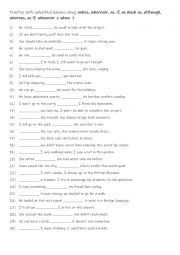
|
A2+-B1 10 adverbial clauses 1
Learning adverbial clauses using words like unless, wherever, as, if, as much as, although, whereas, as if, whenever and when helps students express complex relationships between ideas, such as condition, time, contrast, and manner. These clauses enrich their communication by allowing them to create detailed and nuanced sentences. Mastering these s...
Level: intermediate
Age: 9-100
Type:
Downloads: 123
|
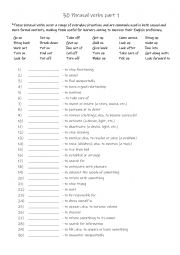
|
30 Phrasal verbs part 1 a
These phrasal verbs cover a range of everyday situations and are commonly used in both casual and more formal contexts, making them useful for learners aiming to improve their English proficiency; they are suitable for CEFR A2-B1 levels. Students match the phrasal verbs to their definitions. Answers on page 2. All of the phrasal verbs used in this ...
Level: elementary
Age: 10-100
Type:
Downloads: 119
|
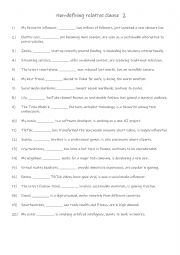
|
Non-defining relative clause 2
Students complete the gap-fill with the correct word. Answers on page 2.
Level: elementary
Age: 10-100
Type:
Downloads: 113
|
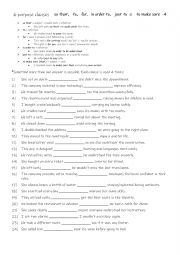
|
A2+-B1 6 clauses of purpose 4
First, students need to familiarise themselves with the 6 clauses of purpose and their formation. Then they read the sentences to see which one is suitable to complete the gap-fill. Each type is used 4 times! Answers on page 2.
Level: elementary
Age: 8-100
Type:
Downloads: 105
|
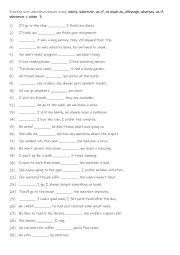
|
A2+-B1 10 Adverbial clauses 3
Learning adverbial clauses using words like unless, wherever, as, if, as much as, although, whereas, as if, whenever and when helps students express complex relationships between ideas, such as condition, time, contrast, and manner. First, students need to familiarise themselves with the 10 adverbial clauses and their use. Then they read the senten...
Level: intermediate
Age: 10-100
Type:
Downloads: 123
|
|
|
|
|












